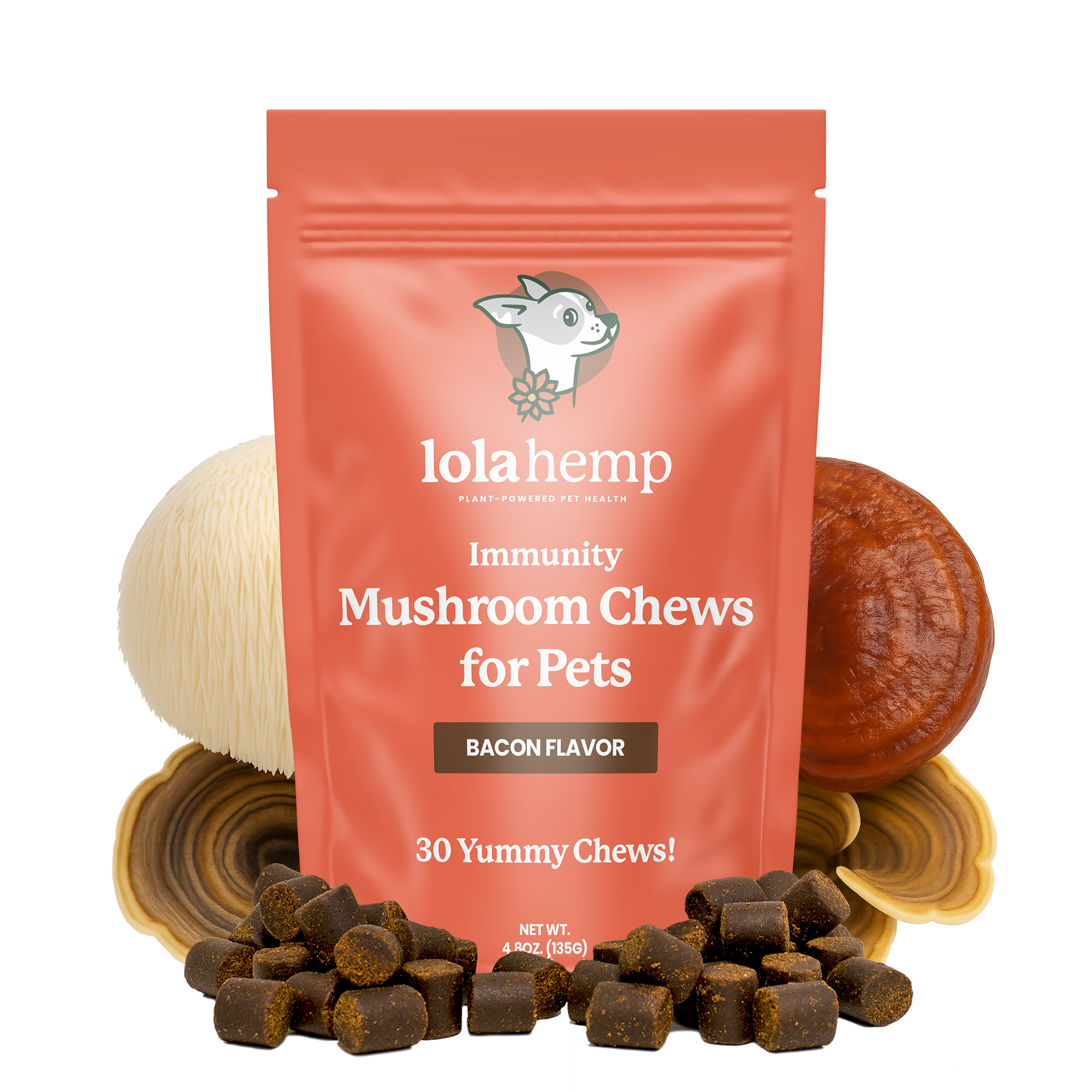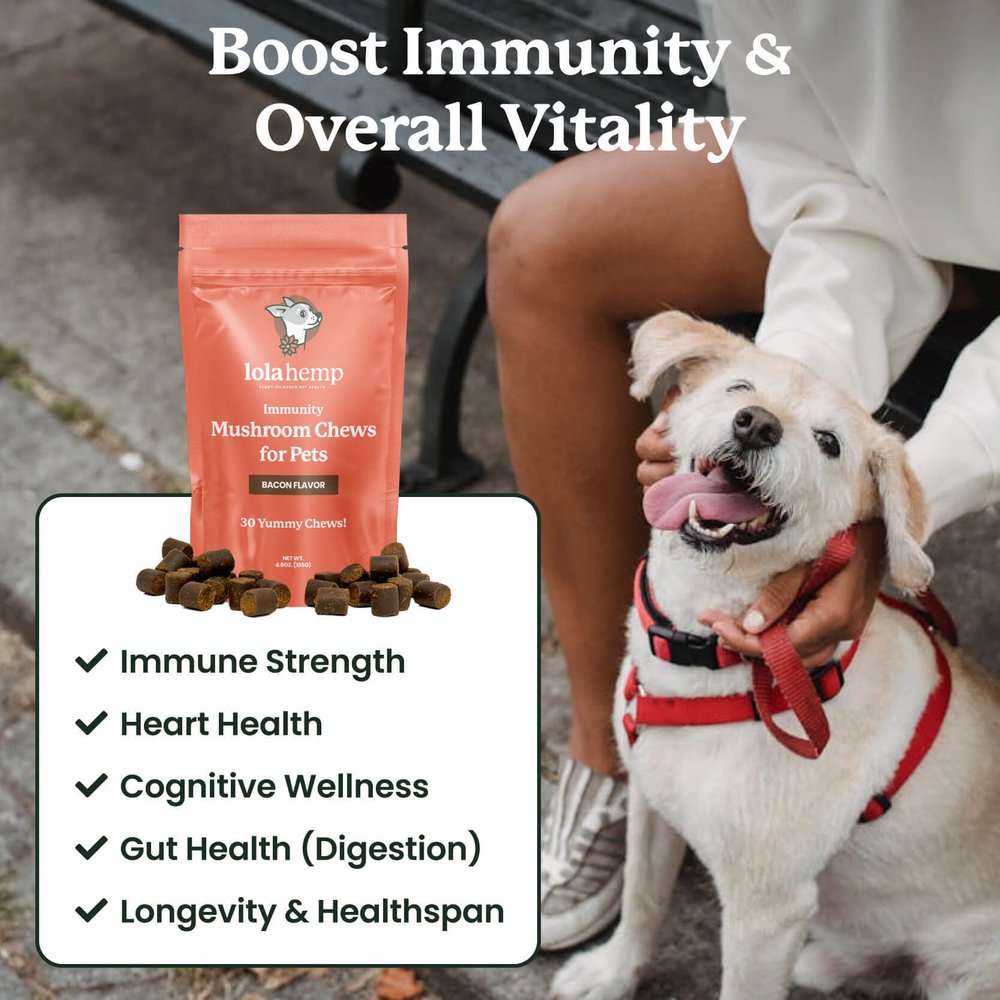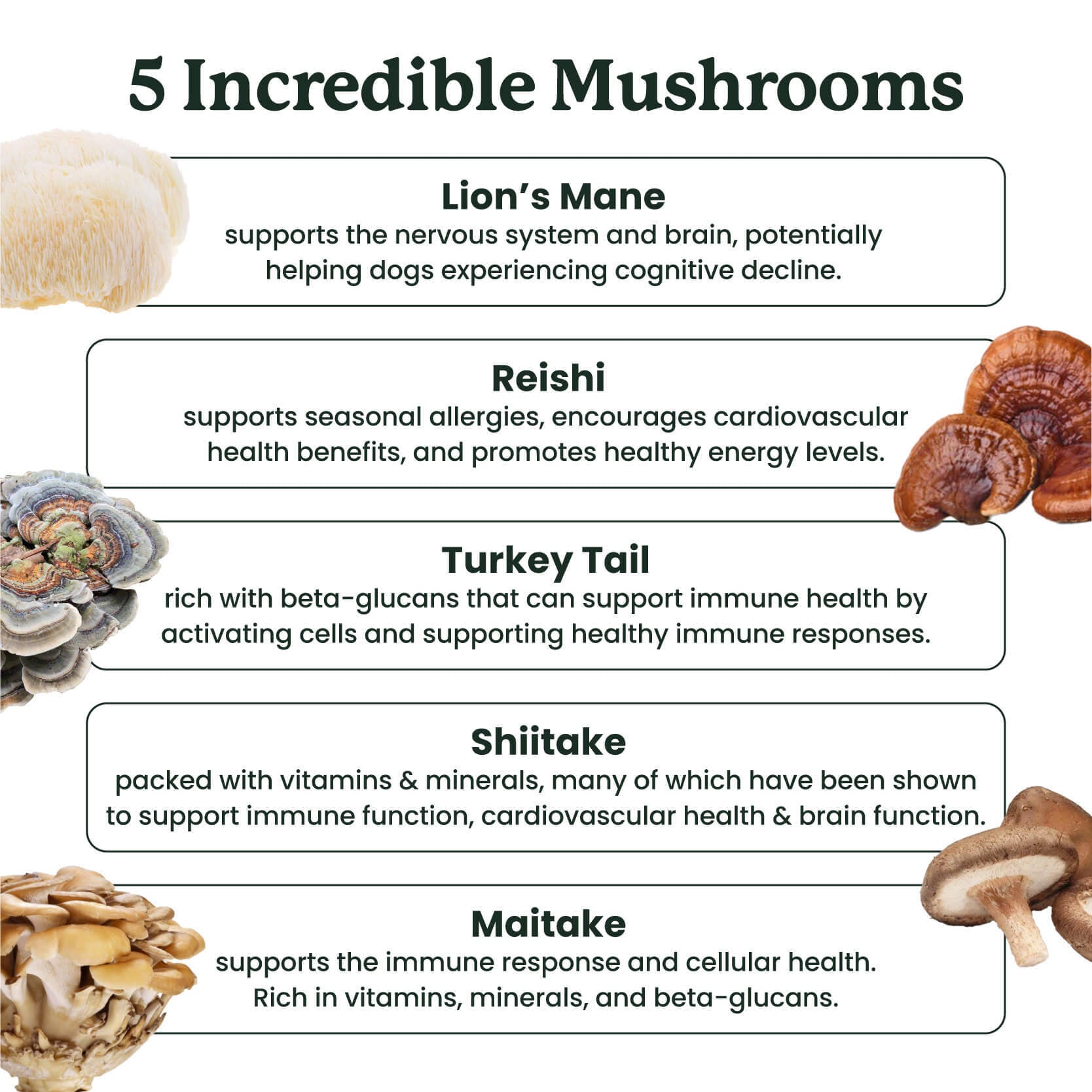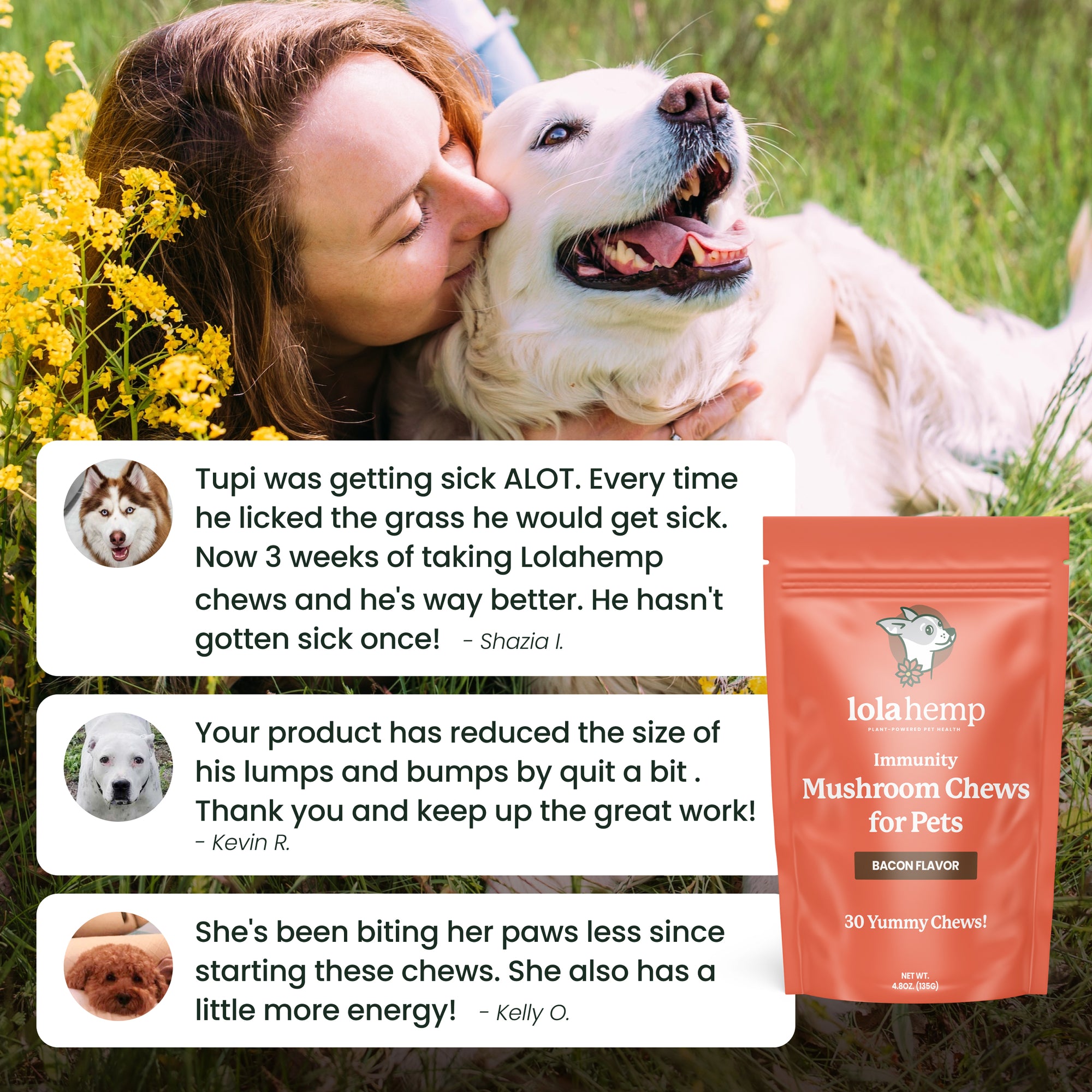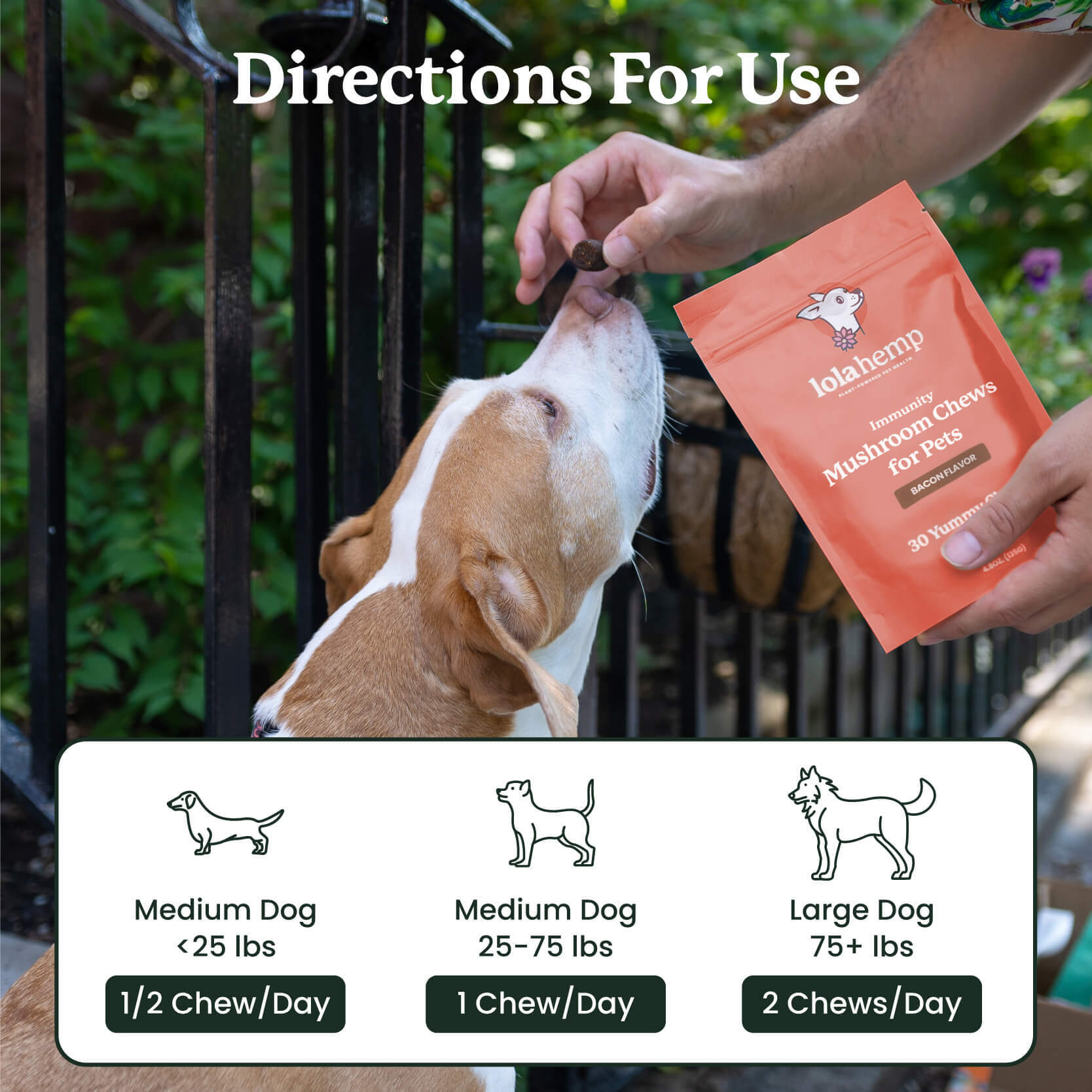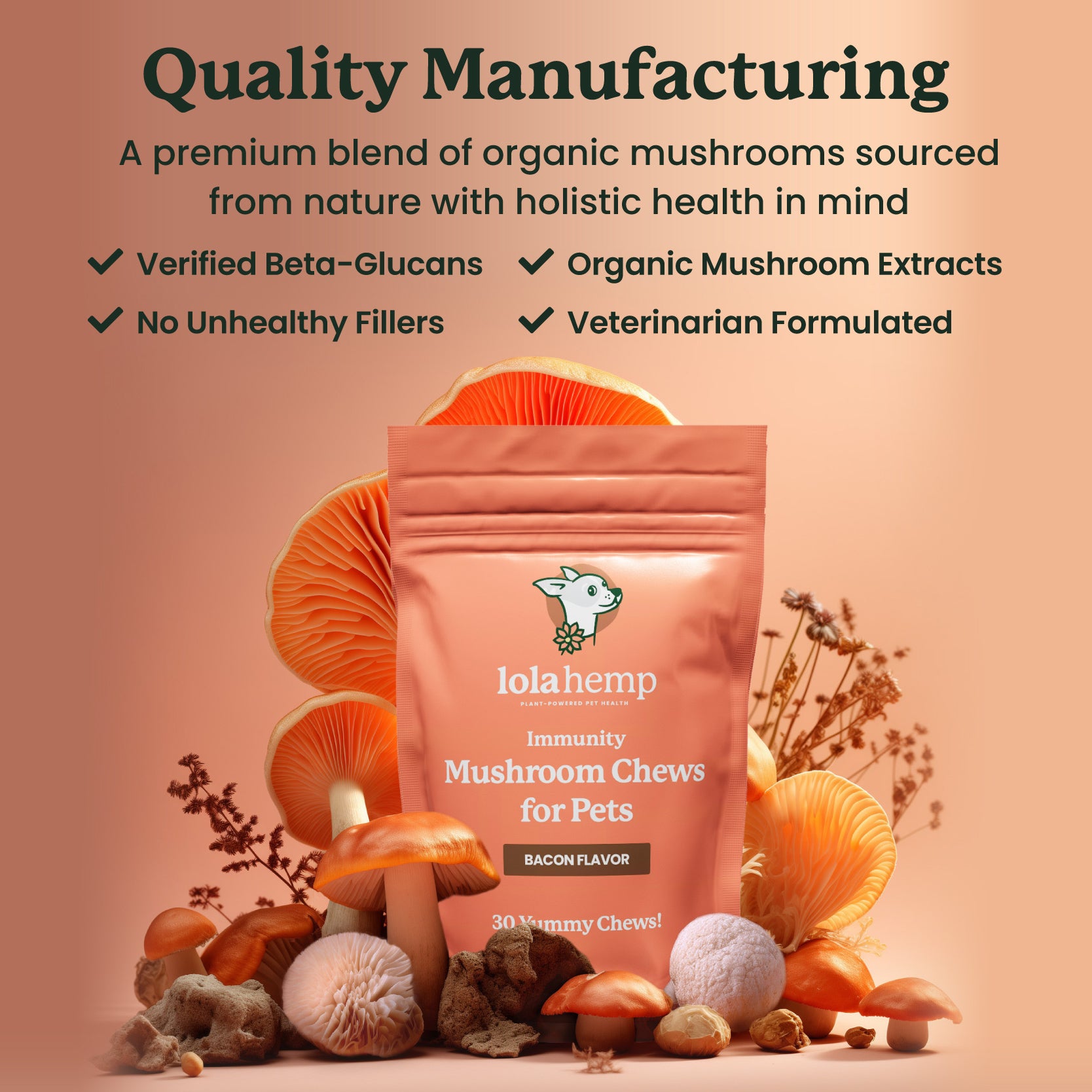Allergy elimination diets for dogs can be a great way to identify allergens and avoid them in your dog's diet. When a dog eats an ingredient that provokes allergic reactions, the immune system perceives that ingredient as an invader, launching an attack against it.
This can have far-reaching consequences, including over-activating the immune system which then creates other issues. Food sensitivities and intolerances, on the other hand, don’t provoke an immune system response but have similar symptoms.
While you address your dog's underlying allergy, you can support their comfort and reduce itching with natural remedies. Let's take a look at how to try an allergy elimination diet for your dog.
Canine Allergy Elimination Diets Explained
Your vet may encourage you to try a dog food allergy elimination diet to find out if you can identify food intolerances that your dog may be reacting to. This involves setting up a diet based on reducing the ingredient your dog eats, then adding back in ingredients one at a time to identify which ingredient is the culprit.
Symptoms of a food allergy or sensitivity in dogs can include:
- Itchy skin/persistent bacterial skin infections (non-seasonal)
- Persistent hot spots (also known as pyoderma)
- Recurring ear infections
- Hair loss
- Gastrointestinal symptoms such as vomiting and diarrhea
- Persistent licking of the feet and legs
- Excessive flatulence
The most common allergens for dogs, in order of prevalence, include:
- Beef
- Dairy
- Wheat
- Egg
- Chicken
- Lamb
- Soy
- Pork
- Rabbit
- Fish
If you suspect that your dog has an allergy to one of the foods they're eating, the following steps will help you identify that allergen.
How to Start an Elimination Diet for Your Dog: Exact Steps and Best Practices
If you suspect that your dog’s digestive issues, skin reactions, or other symptoms are linked to food allergies or sensitivities, an elimination diet can help identify the culprit. However, it requires careful planning and patience. Here’s a guide on how to carry out an elimination diet for your dog:
1. Consult Your Veterinarian
Before starting any elimination diet, it’s essential to consult your veterinarian. They can help rule out other potential causes for your dog’s symptoms and provide guidance on choosing the right food and ingredients for the diet. This ensures your dog’s overall health remains in check during the process.
2. Choose a Novel Protein and Carbohydrate
Start with a protein and carbohydrate that your dog has never eaten before. This helps minimize the chance of your dog being allergic to the food. For example, you could try lamb and sweet potato or venison and peas. Commercial elimination diets are available that include these novel ingredients or you can work with your vet to make a custom homemade diet.
3. Only Feed the Elimination Diet
During the elimination period, only feed your dog the novel protein and carbohydrate. This means no treats, no flavored medications, and no table scraps. Even small amounts of other food can interfere with the process, so strict adherence is crucial.
4. Implement the Diet for 8–12 Weeks
The elimination diet should last for 8 to 12 weeks to ensure the body has time to react and for the allergens to clear from your dog’s system. It may take several weeks for symptoms to improve, so patience is key. Monitor your dog’s health during this time to see if there’s any improvement in symptoms like vomiting, diarrhea, or skin issues.
5. Gradually Reintroduce Old Foods
Once the elimination period has ended and your dog’s symptoms have improved, you can begin reintroducing their previous foods one at a time. Start with one ingredient and wait about 5–7 days to see if any reaction occurs. If no reaction happens, you can try another ingredient, working your way back to your dog’s previous diet. If your dog exhibits symptoms like itching, vomiting, or diarrhea after introducing a specific food, it’s likely that ingredient is the cause of the issue.
6. Track Your Dog’s Symptoms
Keep a detailed food diary during the elimination diet, noting what your dog eats, how they’re feeling, and any symptoms they experience. This will help you and your vet track progress and make informed decisions about your dog’s diet moving forward.
7. Consult Your Vet Again
After completing the reintroduction phase, return to your vet with the results. They can help you determine which food or ingredient is the cause of your dog’s symptoms. Based on this, they may recommend a long-term diet or provide solutions for managing allergies or sensitivities.
Best Practices for a Successful Elimination Diet:
- Stick to the plan: Consistency is crucial. No other food should be introduced during the elimination phase, even in small amounts.
- Monitor your dog closely: Watch for any changes in behavior, energy levels, or symptoms. Any signs of illness should be reported to your vet.
- Avoid shortcuts: Don’t combine ingredients that could lead to confusion. Stick to one novel protein and carbohydrate.
- Stay patient: Elimination diets take time. Symptoms may take weeks to resolve, and it may take several rounds of reintroduction to pinpoint the culprit.
By following these steps carefully, you can help identify food sensitivities or allergies that may be affecting your dog’s health and improve their quality of life. Always keep your vet involved in the process for the best results and guidance.
Conclusion
Elimination diets for dogs aren't extremely difficult to carry out, and they can have lasting benefits for your dog's overall health and longevity. Contact your veterinarian to get more best practices, and discuss some of the information you learned in this article.
We hope your dog can start to feel their best soon! Note that you can reduce itching and discomfort with products like topical balms or immunity supplements while your dog's allergy elimination diet takes place.
Frequently Asked Questions About Allergy Elimination Diets for Dogs
How long does a dog elimination diet take?
Most elimination diets last 8–12 weeks to allow allergens to fully clear from your dog’s system and symptoms to improve.
What foods are used in an elimination diet for dogs?
Vets typically recommend novel proteins and carbs such as venison, duck, lamb, sweet potato, or peas—ingredients your dog has never consumed before.
Can treats ruin an elimination diet?
Yes. Even a small amount of treats, flavored medications, or table scraps can interfere with results and restart the elimination timeline.
What symptoms suggest a food allergy in dogs?
Common symptoms include itching, recurring ear infections, vomiting, diarrhea, hot spots, excessive licking, and gastrointestinal issues.
How do I know when to reintroduce foods?
After the 8–12 week elimination phase, reintroduce one ingredient at a time every 5–7 days and monitor for reactions like itching, vomiting, or diarrhea.

